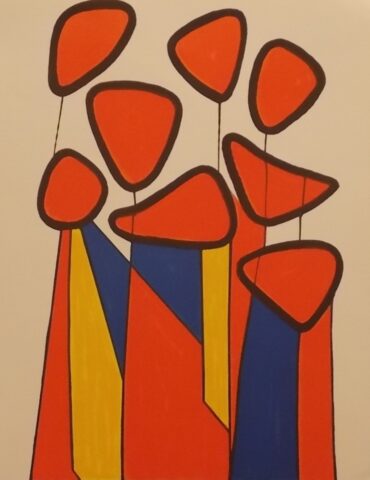
Alexander Calder
Biography
Alexander Calder (1898-1976): Calder was born into an artistic family in Philadelphia in 1898 (his father and grand-father both well-known sculptors), and earned a mechanical engineering degree from the Stevens Institute of Technology in New Jersey. He published his first book, Animal Sketches, illustrated in brush and ink, in 1925 and in early 1926 he began to carve primitivist figures in wood. Calder moved to Paris in June 1926, where he took some classes at the Academie de la Grande Chaumiere and made his first wire sculptures. Calder's first New York City exhibition was in 1928, and other exhibitions in Paris and Berlin gained him international recognition as a significant artist. A visit to Piet Mondrian's studio proved pivotal; Calder began to work in an abstract style, finishing his first non-objective construction in 1931. In early 1932, he exhibited his first moving sculpture in an exhibition organized by Marcel Duchamp, who coined the word "mobile." Though some of his “mobiles” (a completely new genre in modern art) were motor-driven, his later wind-driven mobiles enabled the sculptural parts to move independently, as Calder said, "by nature and chance." From the 1940s on, Calder's works, many of them large-scale outdoor sculptures, have been placed in virtually every major city of the Western world. His works in this mode, from miniature to monumental, are called mobiles (suspended moving sculptures), standing mobiles (anchored moving sculptures) and stabiles (stationary constructions). Calder's abstract works are characteristically direct, spare, buoyant, colorful and finely crafted.
Showing the single artwork


